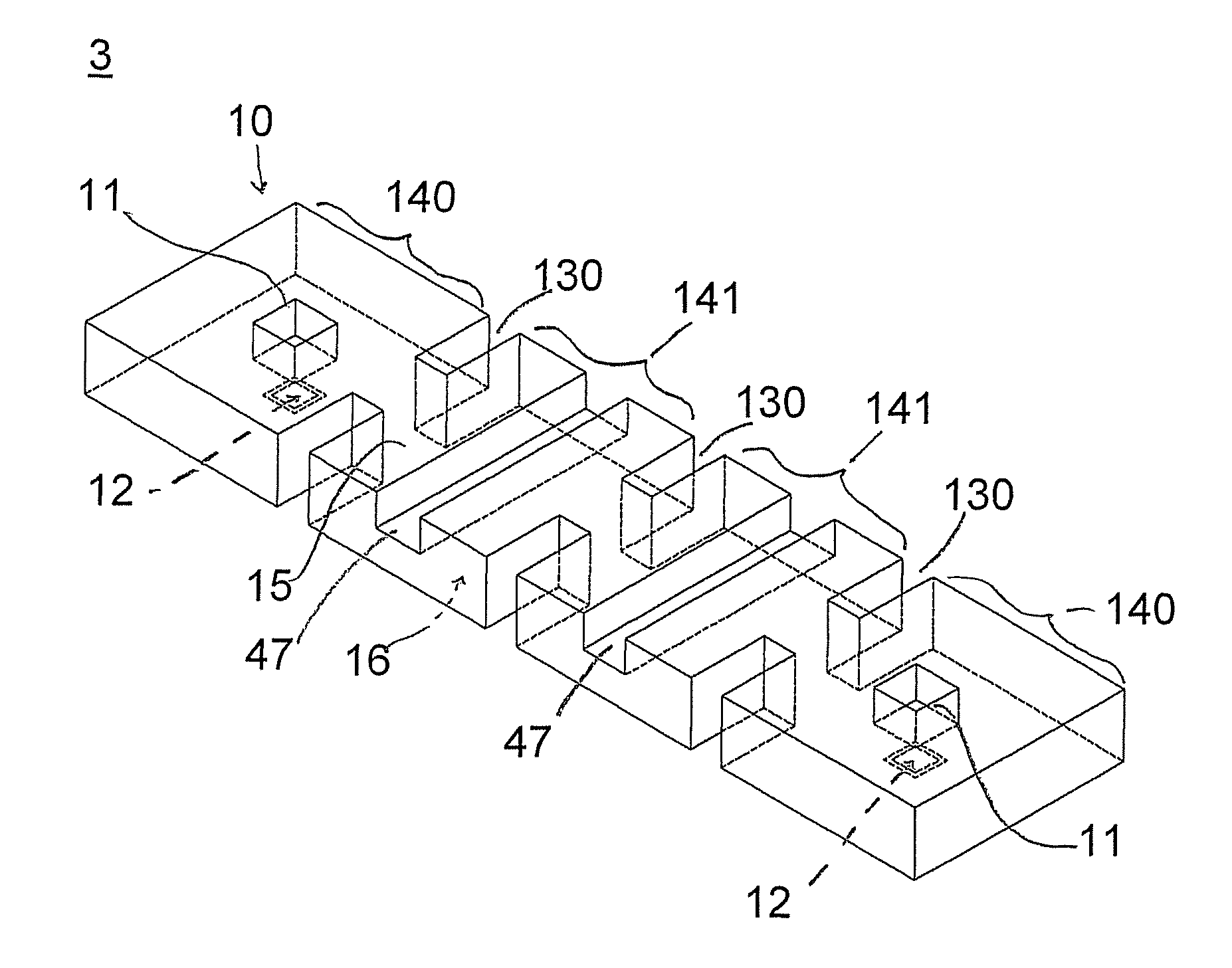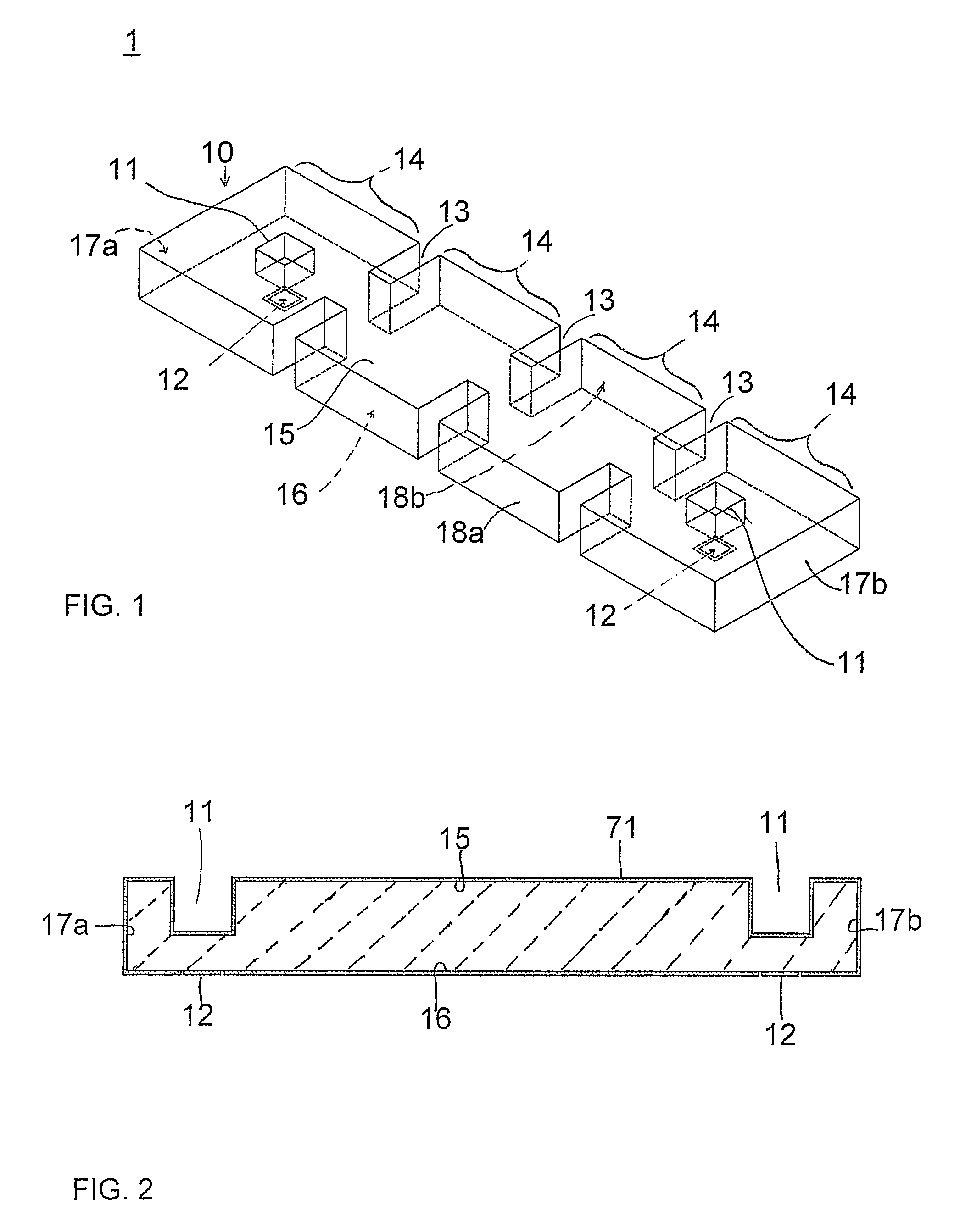Wideband dielectric waveguide filter
a dielectric filter and waveguide technology, applied in waveguides, resonators, electrical equipment, etc., can solve the problems of inability to achieve the desired step, inability to achieve the desired signal transmission, and inability to meet the needs of applications, etc., to achieve significantly miniaturized systems, reduce weight, and reduce the effect of cos
- Summary
- Abstract
- Description
- Claims
- Application Information
AI Technical Summary
Benefits of technology
Problems solved by technology
Method used
Image
Examples
example
[0049]A 4 pole Chebyshev response band-pass waveguide cavity filter for operation at 10.5 GHz was fabricated using a proprietary Magnesium titanate, temperature stable ceramic with a relative dielectric constant of 23 to have the structure shown in FIG. 3. The overall dimensions of the part were 0.68×0.19×0.030 inches. The filter was fabricated from two layers polished ceramic layers, each 0.015 inch thick, in order to form blind cavities 11 with a depth of 0.015 inches. The blind cavities or blind vias 11 had dimensions of 0.02×0.02 inches and were formed directly above the contact pad islands 12, positioned on the longitudinal center-line of the filter at a distance of 0.045 inches from the end faces of the filter. Through holes forming post coupling irises 13′ were formed on the longitudinal center-line of the filter with dimensions of 0.036×0.053 inches and 0.036×0.058 inches with a via center-to-center spacing of 0.180 inches, defining the longitudinal dimension of the resonato...
PUM
 Login to View More
Login to View More Abstract
Description
Claims
Application Information
 Login to View More
Login to View More - R&D
- Intellectual Property
- Life Sciences
- Materials
- Tech Scout
- Unparalleled Data Quality
- Higher Quality Content
- 60% Fewer Hallucinations
Browse by: Latest US Patents, China's latest patents, Technical Efficacy Thesaurus, Application Domain, Technology Topic, Popular Technical Reports.
© 2025 PatSnap. All rights reserved.Legal|Privacy policy|Modern Slavery Act Transparency Statement|Sitemap|About US| Contact US: help@patsnap.com



